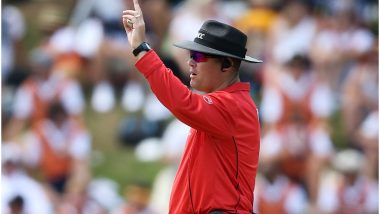Indian Premier League revolutionised T20I cricket and changed the way it was played and perceived. The introduction of cheerleaders and strategic time-outs in the Twenty20 cricket was first introduced in the IPL before being adapted in various T20 leagues around the globe and also in international cricket. The Board of Control for Cricket in India (BCCI) completely changed the landscape of Twenty20 cricket through the introduction of IPL in 2008. And if reports are to be believed, it could bring forth a new renaissance in international cricket by the introduction of the “Power Player” in the IPL. The Power Player is reportedly set to be first tested in the Indian domestic circuit before being introduced in the IPL and perhaps in International cricket in future. BCCI Looking to Introduce Game-Changing ‘Power Player’ Concept in IPL.
The next edition of the Indian Premier League will be held between March and April next year. IPL 2020 will be the 13th edition of India’s premier Twenty20 franchise League. All eight teams in the IPL – Mumbai Indians, Chennai Super Kings, Delhi Capitals, Sunrisers Hyderabad, Rajasthan Royals, Kolkata Knight Riders, Royal Challengers Bangalore, Kings XI Punjab – have already started preparing for IPL 2020. Most teams have already exchanged players with others, while some have initiated new beginnings by appointing new coaches and staffs. Take a look at all the details and everything you need to know about the new “Power Player” rule, which is expected to be implemented in IPL 2020.
What is a Power Player?
The Power Player rule in cricket is similar to the substitution rule in football. A Power Player in cricket refers to players, who were originally not part of the playing XI but were named in the match squad. The players sit on the bench and can come and participate in the match when called upon or when the team needs them. Like the substitution rule in football, a Power Player in cricket implies to a player, who comes off the bench to create an impact on the ongoing match. The player can only come and join the match by replacing another player.
When Can a Power Player Be Used By Teams?
A Power Player can be used by a team in a match according to the needs and demands of that particular team and the match situations. Only players who were not part of the original playing XI can be used a Power Player in a particular match.
The player can be used or called upon by teams whenever it feels the necessity. A Power Player can only be involved in a match as a replacement. The Power Player can only enter the match on the fall of a wicket or at the conclusion of an over.
Does a Power Player Only Apply to Teams Batting?
No, a Power Player can be used by both batting and bowling teams. However, the BCCI has still not ascertained the maximum number of times a team can use a Power Player in a game. Latest reports, however, suggest that teams can only use the Power Player rule once during batting and once during fielding.
For example, If a team needs 20 runs in the last over to win a match and have powerful hitters like Andre Russell, Hardik Pandya or even MS Dhoni sitting in the dugout – with injury or was perhaps left out of the original playing XI for some reasons – the team can call upon the player as a Power Player replacement and ask him to bat to help his team win the game.
Similarly, if the team bowling needs to defend six runs in one over and have someone like a Jasprit Bumrah, Lasith Malinga or even Mitchell Starc sitting out – for the same reasons as above – then the team can call upon them to bowl and guide the team to a win.
When will be Power Player Rule Implemented in Cricket?
According to a report from news agency IANS, the Power Player rule will be implemented in IPL 2020 – pending the approval of BCCI President Sourav Ganguly. But first, the rule will be used in the Indian domestic circuit during next year’s Syed Mushtaq Ali Trophy Trophy, which is a first-class Twenty20 competition.
Have Such Rules Been Ever Used Before in Cricket?
No. The Power Player rule has never been used before in any forms of cricket and will be a completely new rule. But there have been similar rules used before in international cricket. Earlier there was a “Super Sub” rule in international cricket, which was introduced in 2005 but scrapped in 2006. The rule allowed teams to include one extra player apart from the playing XI. The ‘extra player’ could be anyone from within the team, who could be used during the game according to the needs and demands of the said team.
Recently, the ICC has also introduced a “Concussion Substitute” rule in which a player hit on the head while batting can be directly replaced by another player in the playing XI.
The “Power Player” rule if implemented could be just an alternate version of the – now-scrapped – 'Super Sub' rule. The rule although approved by most in the BCCI will still be discussed further in the cricket board’s Annual General Meeting (AGM) on November 5, 2019 (Tuesday). The rule is also pending approval of the new BCCI president Sourav Ganguly. It could bring a revolutionary change if the rule is passed and eventually implemented in cricket, but only time will tell if the change is for good.
(The above story first appeared on LatestLY on Nov 04, 2019 11:27 PM IST. For more news and updates on politics, world, sports, entertainment and lifestyle, log on to our website latestly.com).













 Quickly
Quickly












